14 Dynasties and a Region: The History and Culture of the Muslim World, a joint exhibition between the Islamic Arts Museum Malaysia and Tokyo National Museum, unfolded and recounted the rise and fall of fourteen major Muslim dynasties through an assemblage of 205 artefacts housed in Room 12 and 13 of the Toyokan Gallery in Tokyo National Museum, Japan. The artefacts, selected from the collection of the Islamic Arts Museum Malaysia, aimed to introduce Islamic art history to the Japanese audience through a rich display of material culture from the Muslim world that spans over 1000 years.

Following the time of Prophet Muhammad, and subsequently the governance of the Rashidun ‘Rightly-Guided’ Caliphs in Madina, the Muslim community witnessed the beginning of the first Muslim hereditary dynasty known as the Umayyad dynasty in Syria. Through diplomacy, trades relationships, and conquests of Muslim rulers, Islam spread extensively—covering as far as Spain and Morocco towards the west as well as China and the Malay world towards the east—by the 16th century. The final two Muslim dynasties, which ended in the early 20th century, were the longest-lasting dynasty of the Ottomans in Turkey, and the family of the Qajars in Iran.
These dynasties played a pivotal role in the formation of Islamic artistic styles, leaving behind a legacy much admired today through architectural remnants, manuscripts, paintings, metalwork, textiles, jewellery and more. The sacred message – as revealed in the Qur’an – commanding the pursuit of knowledge through travel, made way for the exchange of craftsmen, material goods, designs and motifs, and encouraged their acceptance. For more than a millennium, these dynasties acquired new artistic skills, techniques and philosophies, incorporating them into their own artistic vocabulary.
Throughout the exhibition, these material culture—ranging from the early Qur’anic folios made from vellum to large contemporary calligraphic paintings on canvas, from the smallest royal seal rings to large-scale European oil painting—whether produced for everyday consumption or exclusively for royalty, all contributed in highlighting a common language of ornament. The unique production of Islamic arts, formed through the contact between Islam, or Muslim culture, with the local traditions, represented the artistic accomplishment of each Muslim dynasty.
The exhibition was made possible with the cooperation from the exhibition team from the Tokyo National Museum, and most importantly, from the generous sponsorship of Sumitomo Corporation, J-Power Electric Power Development Co. Ltd, and Sumitomo Mitsui Banking Corporation.
Organised by:


Sponsored by:








